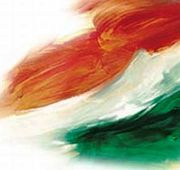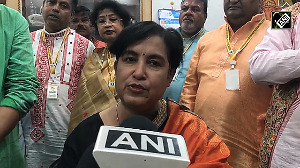 After a fruitful visit of US President Barack Obama, India is planning to initiate negotiations for a Comprehensive Economic Partnership Agreement with the country.
After a fruitful visit of US President Barack Obama, India is planning to initiate negotiations for a Comprehensive Economic Partnership Agreement with the country. "We signed a memorandum of understanding for cooperation in trade in services and investment during my last visit to Washington. We should now seriously consider engaging in negotiations for a Comprehensive Economic Partnership Agreement that encompasses trade, investment and services. . . .
"This will bring a paradigm shift in global architecture," Commerce and Industry Minister Anand Sharma today said, while addressing Indian industry along with US Commerce Secretary Gary Locke.
Adding India was against any kind of protectionism by any country, Sharma said the country was in the process of 'simplifying and rationalising the FDI policy' and, in most of the sectors, foreign investment was allowed under the automatic route.
However, Locke did not look very eager to have such a trade agreement with India yet.
He said: "Everything will have to be done in stages. Right now, we have many agreements already concluded. The business communities are focusing, so we take a step at a time."
Locke also referred to India's FDI rules as 'complex, non-transparent and barriers to trade' and that these would hit long-term trading relations between the countries.
He was referring to opening up of the retail sector, especially multi-brand retail, for FDI.
He said, while India had embarked on a high growth path, it should seriously consider liberating certain sectors for more foreign investment, or the country's growth might be stalled.
The US commerce secretary also highlighted Obama's National Export Initiative, which aimed at doubling US' exports in the next five years and creating 50,000 jobs.
"As trading partners, US companies can help India meet the ambitious
At present, the two countries discuss bilateral trade and investment under the India-US Trade Policy Forum, set up in July 2005 under the chairmanship of the commerce and industry minister and United States Trade Representative. In April 2007, a Private Sector Advisory Group was formed to help and provide inputs for the TPF.
Two-way trade in goods between the two countries is expected to exceed $50 billion this year.
US exports to India have grown by 17.5 per cent in the first eight months of this year and is expected to reach an all-time high of $19 billion in 2010, compared to $16.4 billion last year, due to a rise in the export of advanced technologies, including aerospace, specialised materials, information and communications technologies, electronics and manufacturing systems, according to a data by the US Department of Commerce.
Earlier, during his India visit, Obama had urged India to open its markets for more US goods and remove trade barriers so that more US companies could set up shop here and export goods, particularly in the agricultural sector.
Bilateral trade between the two countries stood at $36,509.17 million in 2009-10, compared to $26,807.80 million in 2005-06.
Even as the Doha round of multilateral trade talks have hit a virtual dead-end, India has started an aggressive drive to put in place bilateral trading arrangements with countries like Sri Lanka, Malaysia, Japan, South Korea and the Association of South East Asian Nations.











 © 2025
© 2025